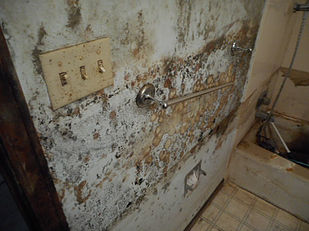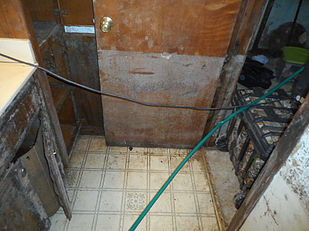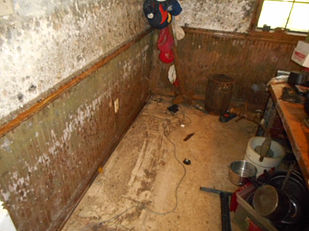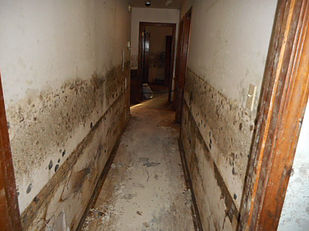Mold can create serious health problems for residents recovering from the severe storms, flooding and tornados. Health officials say problems from exposure can follow if mold is disturbed through cleanup procedures. Also, mold is easily transferred from one surface to another. Infants, children, immune-compromised patients, pregnant women, individuals with existing respiratory conditions (allergies, multiple chemical sensitivity, and asthma) and the elderly appear to be at higher risks for adverse health effects from mold. – FEMA
 Storms can cause constant problems for a property owner. One of the main problems that occur after a storm is excess moisture that can lead to mold growth. There are strategies to help prevent mold damage from occurring after a storm. What strategies are there to assist in determining whether or not you may have a mold problem? And, why can a storm cause mold growth in the first place?
Storms can cause constant problems for a property owner. One of the main problems that occur after a storm is excess moisture that can lead to mold growth. There are strategies to help prevent mold damage from occurring after a storm. What strategies are there to assist in determining whether or not you may have a mold problem? And, why can a storm cause mold growth in the first place?
 Wood and moisture are mold’s primary source of nutrients. With wood being a main component of many building products, this provides for a great environment for mold growth. Another cause of mold growth is repairing a property too quickly after a water damage.
Wood and moisture are mold’s primary source of nutrients. With wood being a main component of many building products, this provides for a great environment for mold growth. Another cause of mold growth is repairing a property too quickly after a water damage.
 A common area where mold frequently grows and proliferates in a property is the basement. Mold grows wherever there is a presence of moisture and the ground surrounding a home is always saturated with moisture after a storm. As the moisture permeates through the walls of the building, it will attempt to find sources of nutrients such as wood base products that might be covering the concrete or mortar walls of the basement.
A common area where mold frequently grows and proliferates in a property is the basement. Mold grows wherever there is a presence of moisture and the ground surrounding a home is always saturated with moisture after a storm. As the moisture permeates through the walls of the building, it will attempt to find sources of nutrients such as wood base products that might be covering the concrete or mortar walls of the basement.
 Water damage mitigation, if not done properly, can create mold growth after a storm. If the property is not dried out completely, it can create a consistent mold problem. If a restoration company has not done the drying portion properly, then there is a high chance that mold may develop on the materials. This replacement material may include studs, drywall, and insulation. These are prime sources for mold growth.
Water damage mitigation, if not done properly, can create mold growth after a storm. If the property is not dried out completely, it can create a consistent mold problem. If a restoration company has not done the drying portion properly, then there is a high chance that mold may develop on the materials. This replacement material may include studs, drywall, and insulation. These are prime sources for mold growth.
Mold growth is a constant peril after a storm. A common misconception is that bleach is the best solution for removing mold. Bleach kills mold on non-porous surfaces but it doesn’t kill all of mold on non-porous surfaces such as wood framing and drywall. It is best to use an anti-fungal or anti-microbial agent on all areas affected by the flood waters. There will be an allowance in your estimate for applying the anti-microbial agent up to one foot above the water line.
Areas recuperating from floods are often prime targets for less than-honest business activities. Building codes often require that work be done only by licensed contractors. Some building departments and trade associations keep lists of contractors who work in the community.
Here are some points to remember: